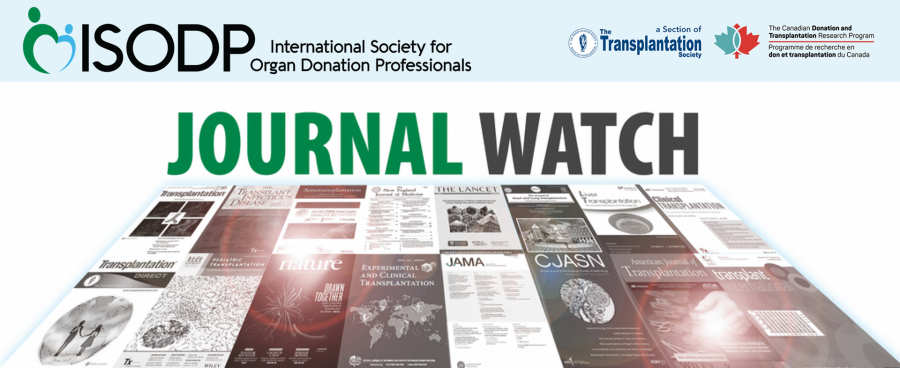Introduction
We start ISODP Journal Watch with a bumper edition summarizing 8 articles for your consideration.
Three articles discuss perceptions and concerns stemming from the use of normothermic regional perfusion in donors after circulatory death. We all need to engage sensitively in this area, where there are strong opinions, and we need scientific and ethical support. These articles add needed input and engagement to what is being said in this space.
From Brazil, we have a study focusing on paediatric donor rates for specific organs and tissues over time. This donor group has room to improve tissue donation and specific organ donation rates. Then, we look at a Canadian study looking at a downstream step in the process: variability in acceptance rates of paediatric organs.
We have a mouse research study on exercise preconditioning in liver transplantation. It is always fun to think about how these types of papers could influence our clinical practice in the future.
A paper from China examines the Buddhist philosophy of “reverse care” in a qualitative paper examining end-of-life care practices in this culture, highlighting different psychological impacts and 'evolutions' to death at multiple levels of society.
Transplantation, the mothership journal of The Transplantation Society, has published a needed paper on transplant registries. Tracking data is something we all need to do to allow quality improvement and transparency in practices and this is an excellent paper.
We also want to give a shout-out to the reviewers who summarized the articles. You may see that some of our reviewers have the qualification (RN), which is a registered nurse in South Africa. Transplant Coordinators in our country often fulfil multiple roles at once—deceased donor coordinator, living donor coordinator, recipient donor coordinator—and cover shifts in dialysis units, dialysis clinics, and ICUs. We appreciate their engagement and support for the ISODP Journal Watch editions coming from South Africa.
Dr. Thozama Siyotula
(Pediatric Surgeon)
thozama.siyotula@uct.ac.za
Dr. David Thomson
(Critical Care and Transplant Surgeon)
thomson.david@gmail.com
Dr. Noxolo Mashavave
(Pediatric Surgeon)
nzxaba@gmail.com
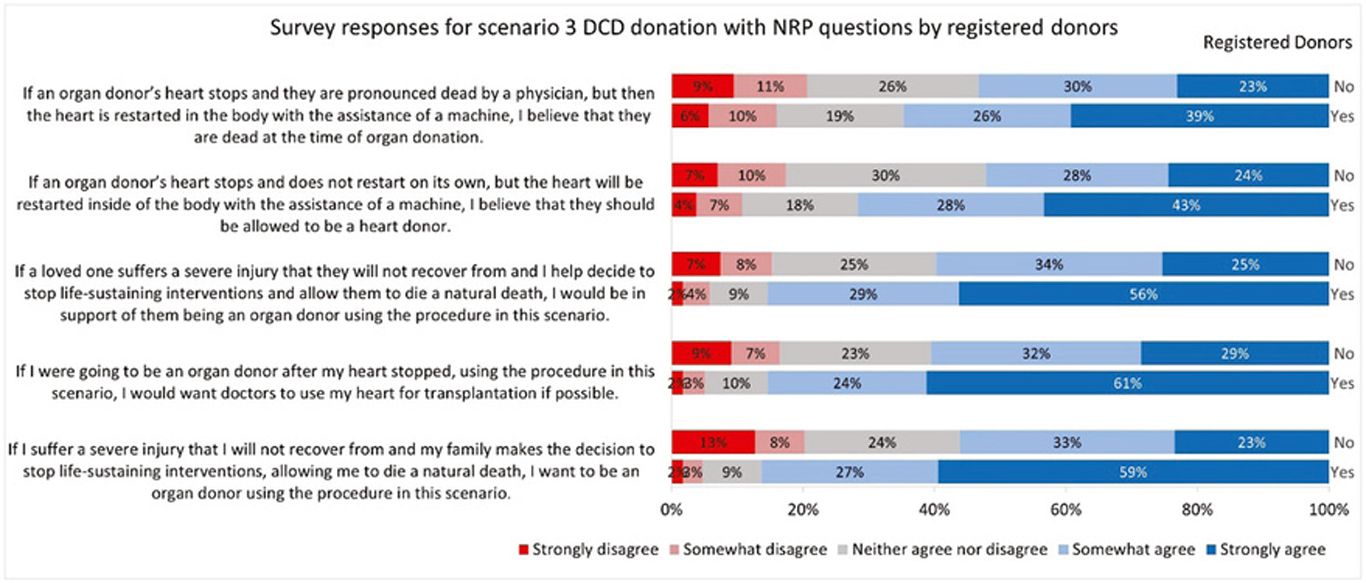
Public Perceptions of Organ Donation by Determination of Death and Procurement Technique
Wall, Anji et al.
American Journal of Transplantation, January 8, 2025
Corresponding author: None Mentioned
There have been ethical concerns raised regarding normothermic regional perfusion (NRP) in organ donation after circulatory death (DCD), especially when looking at thoracoabdominal (TA) NRP, where the heart will be restarted in situ with restricted brain perfusion. It has been said that this procedure will impact negatively on the public’s willingness to donate organs.
Wall et al. conducted a cross-sectional survey study on this topic, which aimed to assess the public’s perception of the ethical dilemmas and their willingness to donate under these circumstances. Completed by 1062 adults in the United States, 529 registered organ donors and 533 non-registrants, the survey compared donation in three different scenarios:
- Donation after brain death
- DCD with ex situ heart perfusion
- DCD with TA-NRP
The results of the survey showed that the public is in support of maximising organ utilisation and increasing the availability of organ transplantation with the most respondents (79%) willing to donate their organs under any of the three scenarios. As expected, registered organ donors were more likely to donate than non-registrants. Most importantly, the survey found that the public’s perception of NRP did not significantly differ from the other methods of donation, suggesting that it is acceptable to offer NRP and that it will not negatively impact on the decision to be an organ donor.
The findings were presented as an oral session at the American Society of Transplant Surgeons’ 25th Annual State of the Art Winter Symposium and published as an abstract in the American Journal of Transplantation. We hope a fuller publication will follow for this important work as public perceptions can help shape and support donation advancements in the DCD space.
Summary prepared by: Dr. Hettie Le Roux

Lethal Donation: Do Physicians Cause Death or Preserve Organs in NRP-cDCD?
Busch, Emil
Transplantation, January 10, 2025
Corresponding author: Emil Busch - emiljb@uio.no
Donation after circulatory death (DCD) has been the largest driver of growth in deceased organ donation in the United States over the past 5 years. Most transplant centres utilize DCD organs with normothermic regional perfusion (NRP) with good outcomes. In this article, the author responds to an American College of Physicians (ACP) statement of concern regarding the use of normothermic regional perfusion in controlled donation after circulatory death (cDCD). The ACP view is that death determination is negated by the use of NRP and that physicians are actively causing the death of donors.
The article's title is problematic for us and misleading in this clickbait era because the term "lethal donation" is a complete misnomer, and the author actually sets about refuting it in the article. Someone not reading the article could reasonably expect it to go in the other direction. The author rightly points out that the ACP view could be interpreted as physicians murdering patients during organ procurement, but the author actually disagrees with this statement and refutes it on three levels by deconstructing the arguments in a logical manner.
The author finds the claim that death is caused by NRP to be uncompelling. DCDNRP does not cause deviation from what would be the normal course of events in that particular context. Steps taken in DCD-NRP protocols are in place to ensure there is no inappropriate resuscitation of the brain and possible restoration of some level of neurological function during the organ recovery process. These steps are not altering the cause or determination of death. The author highlights the challenges of using the counterfactual concept of causation used by the ACP in their statement of concern.
As a transplant community, we must be able to discuss concerns around DCD-NRP in a reasoned and logical fashion. It is a space where not all medical colleagues and organizations agree.
Summary prepared by: Grant – Lee Hoffman (RN)

A Scoping Review of the Legal and Ethical Challenges with the Use of Normothermic Regional Perfusion in Controlled Donation After Circulatory Determination of Death from 2005 to 2023
Da Graca, Briget et al.
American Journal of Transplantation, January 25, 2025
Corresponding author: Anji Wall - anji.wall@bswhealth.org
This scoping review examined the evolution of the debate in published literature with regards to the use of normothermic regional perfusion (NRP) to gain understanding of where consensus does and does not exist and to gain insight into the distribution of authors and journals engaging in the ongoing controversial debate. It highlights the legal issues, ethical challenges and clinical considerations. A total of 112 peer-reviewed publications were reviewed. The review covers literature from 2005 to 2023, examining how NRP is utilized to preserve organs for transplantation following the determination of death, specifically in controlled scenarios where death is declared after circulatory arrest. The 4 countries with greatest volume contribution were the USA, UK, Canada and Spain, contributing 80% of publications. A group of prolific publisher authors (those who were the first/last author in ≥ 3 publications) accounted for 41.1% of publications, making them highly influential in this topic.
The article discusses the varying legal standards and regulations governing cDCD and NRP across different jurisdictions. This includes debates on the definition of death, the timing of death determination, and the legality of using NRP before confirming death. Ethical considerations include the potential conflicts of interest in organ donation, concerns about whether NRP may alter the determination of death, and the potential harm to patients and their families. The review examines how both the public and healthcare professionals perceive NRP, including the trust and transparency issues raised by its use. The practical application of NRP and its success in improving organ viability is discussed, alongside the associated risks and benefits for both organ recipients and donors.
The article aims to provide an overview of the intersection of legal, ethical, and medical challenges surrounding NRP in cDCD, emphasising the need for clear guidelines and ethical frameworks.
Summary prepared by: Dr. Danelle Erwee
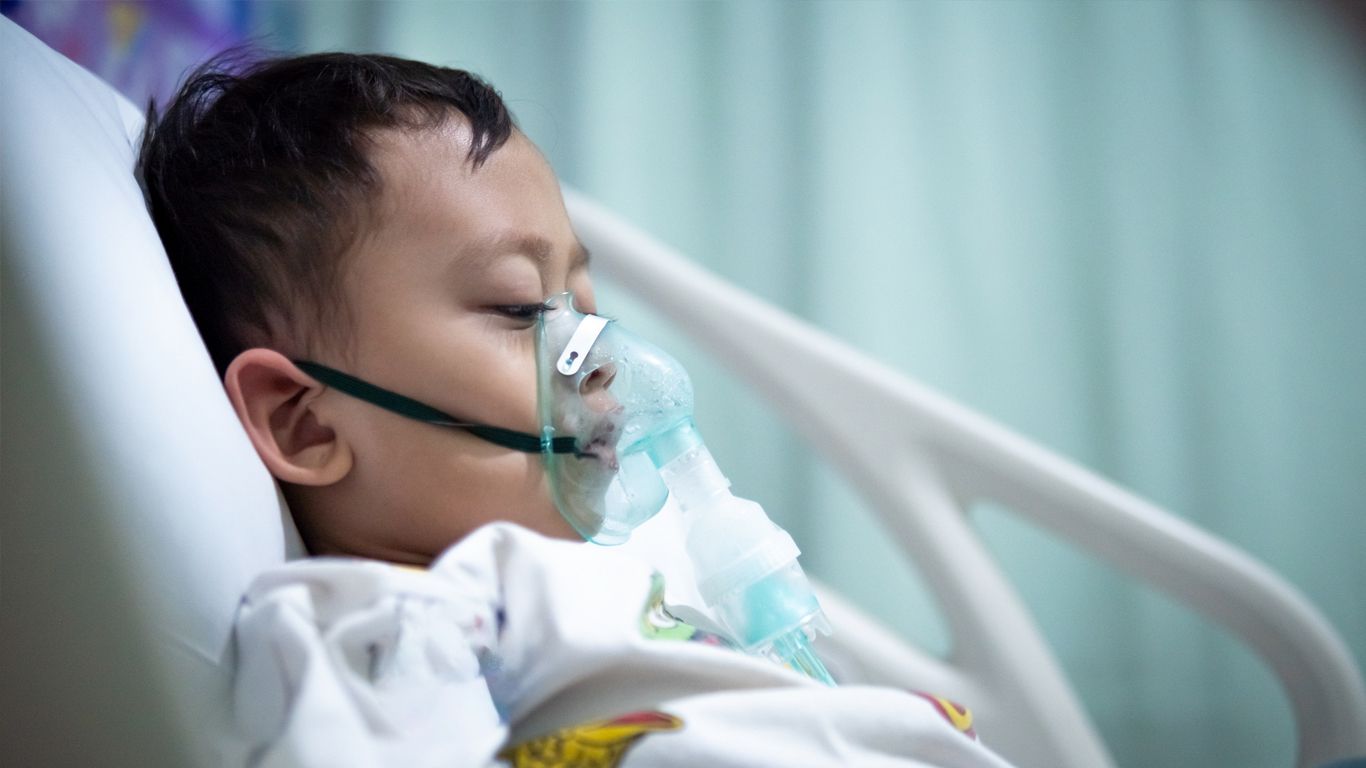
Trends in Specific Family Refusals for Pediatric Organ and Tissue Donation: A Cross-Sectional Study
Matheus de Souza, Danton et al.
Pediatric Transplantation, February 29, 2025
Corresponding author: Danton Matheus de Souza - danton_souza@usp.br
This Brazilian study investigates trends in family refusals for specific pediatric organ and tissue donations in São Paulo between 2001 and 2020. It explores ethical dilemmas in selective donation preferences and aims to understand why certain organs or tissues are more frequently refused.
Data from 109 pediatric donors (aged 0-12) were examined, focusing on organs/tissues donated versus refused. Statistical analyses determined trends in refusals over time.
High refusal rates were observed for tissues like bones (69.7%), skin (71.5%), and blood vessels (61.5%). Lungs (10%) and pancreas (9.2%) had the highest refusal rates among solid organs, while the heart had zero refusals. Most refusals declined over time, with significant decreases for skin, bones, blood vessels, and valves. However, refusals for corneas, liver, and kidneys remained stable.
Families often prefer donating solid organs over tissues, possibly due to a lack of awareness, misconceptions, and emotional factors. The study highlights the need for better public education on tissue donation and improved family counseling. Legislative changes and public awareness campaigns may have contributed to the declining refusal rates.
Given ongoing pediatric donor shortages worldwide, which impact waitlist times for children, it is crucial to continue improving in this area. The study emphasizes the need to better present tissue donation as an option for families during times of tragedy and loss.
Summary prepared by Anja Meyer (RN)
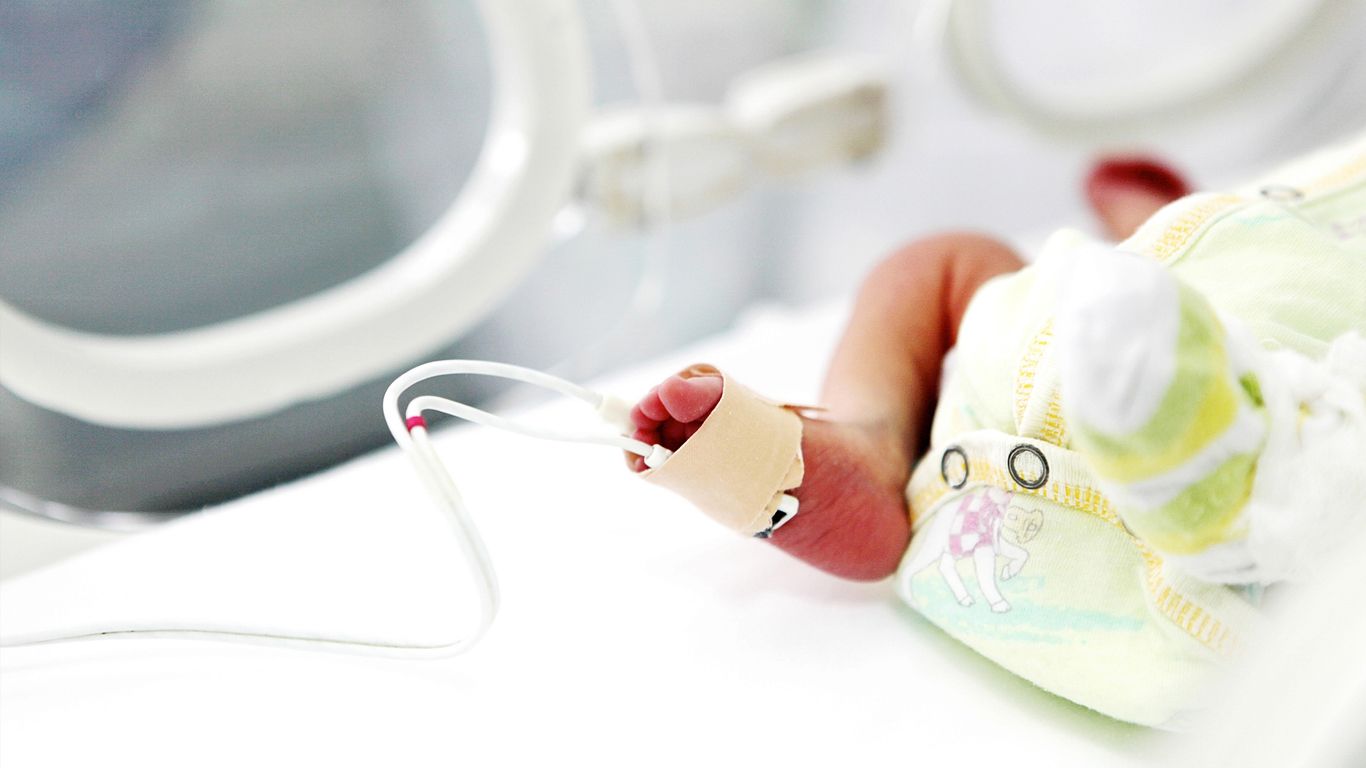
Variability in pediatric and neonatal organ offering, acceptance and utilization: a survey of Canadian pediatric transplant programs and organ donation organizations
Lee, Laurie et al.
Frontiers in Transplantation, September 26, 2024
Corresponding author: Laurie Lee - laurie.lee@ahs.ca
This cross-sectional survey of organ donation organizations (ODOs) and paediatric transplant programs (TPs), conducted in Canada from January 2021 to April 2022, highlights the variability of organ transplant opportunities due to the significant differences with regards to organ allocation, acceptance, and utilisation within the different organisations and programs for paediatric patients. This study defines paediatrics as ranging from birth to 18 years of age.
The survey response rates were high with 9 out of 11 (82%) ODOs and 15 out of 18 (83%) TPs completing the survey. The 9 ODOs responding cover all paediatric and neonatal organ donation and transplants across Canada. While the 15 paediatric TPs responding included 7 kidney, 3 heart, 2 lung, 2 liver and 1 intestine transplant programs with 3 paediatric centres not responding.
Five of the key findings in the survey include:
- There is a significant discrepancy between ODOs’ and TPs’ donor exclusion criteria and organ-specific acceptance criteria.
- ODOs and TPs have varying criteria for the age, weight and donation type death by circulatory criteria (DCC) vs death by neurological criteria (DNC).
- There is underutilization of DCC donations despite having existing DCC-specific criteria and evidence showing comparable outcomes to DNC donations.
- There are logistical issues, such as a lack of appropriate recipients and difficulty transporting organs in Canada.
- Only 2 of the 9 ODOs have paediatric-specific committees, and only 1 has family involvement.
The authors conclude that there is room to optimise paediatric organ donation and transplantation in Canada. More collaboration between ODOs and TPs should take place, with two key facilitators identified as having paediatric ODO coordinators and dedicated organ donation teams within PICUs and standardised guidelines for neonatal and paediatric organ offering, acceptance, and utilisation.
Summary prepared by: Dr. Hettie Le Roux

Exercise Preconditioning of the Donor Liver Decreases Cold Ischemia/Reperfusion Injury in a Mouse Model
Yazdani, Hamza et. al
Transplantation, January 2025
Corresponding author: Samer Tohme - tohmest@upmc.edu
This study explored the protective effects of exercise preconditioning on donor livers subjected to cold ischemia/reperfusion injury in a mouse model. Cold ischemia/reperfusion injury is a major challenge in liver transplantation, often leading to organ dysfunction and failure.
This study assessed 177 patients as reaching medical futility from 1331 patients dying in the 19 ICUs studied. When assessed for potential donation 20 (11.3%) of these patients were deemed medically suitable as potential donors after circulatory death.
The study used a controlled mouse model, dividing mice into exercise and nonexercised/sedentary groups. The exercise group underwent 4 weeks of treadmill training. The livers of the exercised and non-exercised mice were subjected to a standardized period of cold ischemia followed by reperfusion.
Various biomarkers of liver injury, inflammation and oxidative stress were analyzed to assess the impact of exercise preconditioning. Results indicated that exercise preconditioning reduced liver injury after reperfusion, including lower levels of serum alanine aminotransferase (ALT), aspartate aminotransferase (AST) and lactate dehydrogenase (LDH), compared to nonexercised controls. Histological analysis also showed decreased necrosis and inflammation in exercised mice.
The clinical significance of this research would be open to interpretation. Should living liver donors start on the treadmill? Should exercise history be part of deceased donor liver assessments? Or will there be possible therapeutic augmentation possible of hepatocyte mitochondrial content through PGC-1α stimulation to mitigate post reperfusion inflammation and improve transplant outcomes?
Summary prepared by Dr. Eghosa Obaseki
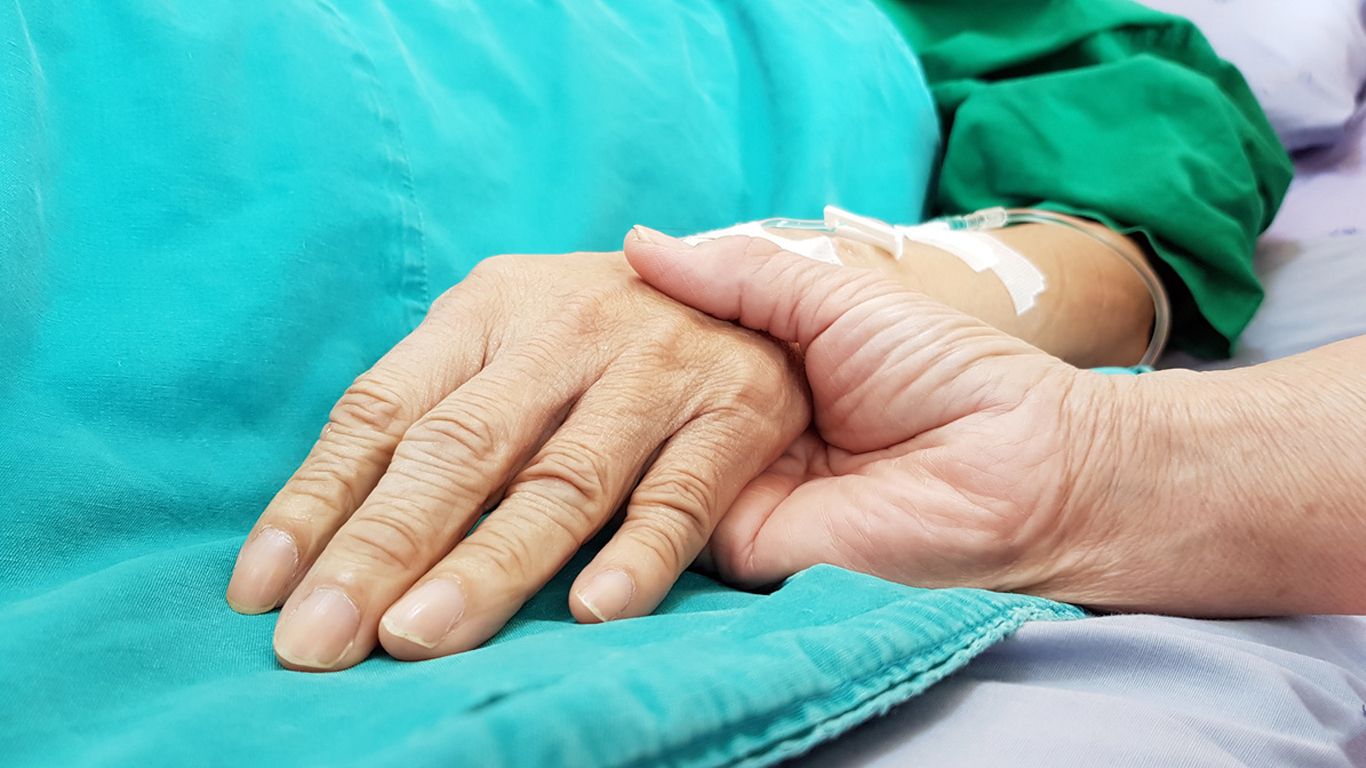
Reversing End-of-Life Care
Jun Jing and Min Song
Asian Journal of Medical Humanities, October 28, 2024
Corresponding author: Min Song - 18210567894@139.com
The concept of reverse care is inspired by the Buddhist principles of merit transfer, which emphasize selfless acts at the end of life. Under this concept, a terminally ill person will focus on supporting and caring for others, such as family members, fellow patients, general society, and the environment. It encompasses personal autonomy, compassion, and a sense of social responsibility among terminally ill people.
This qualitative study, set in China, uses 146 interviews with healthcare professionals, social workers and family members to explore the dynamics of reverse care. It shows how this end-of-life experience can foster purpose, dignity and meaningful relationships.
Four key findings from this study looking at aspects of reverse care include:
- Demonstration and expression of gratitude by acts such as expressing gratitude towards medical staff, organ donation, and the choice of an eco-friendly burial.
- Easing of the burden on families and contributions to the well-being of society.
- Emphasis on respecting and facilitating a patient’s final wishes, which in turn enhances patient-centred outcomes.
- Delivery of holistic, patient-centred care by healthcare professionals when they understand how terminally ill patients find meaning and purpose.
This article provides tools to improve the spiritual, emotional, cultural, and social dimensions of care in terminally ill patients. It is an excellent read for healthcare professionals looking to improve their end-of-life care practices across cultures. As it highlights, there are different psychological impacts and evolutions to death at multiple levels of society.
Summary prepared by Dr. Hettie Le Roux

Organ Donation and Transplantation Registries Across the Globe: A Review of the Current State
Rampersad, Christie et al.
Transplantation, October 1, 2024
This excellent review highlights the global landscape of organ donation and transplantation (ODT) registries, emphasizing their critical role in advancing clinical practice, epidemiological insights, and health system planning. Using data from 2000 to 2023, the study identified 129 registries from all continents except Antarctica. Most were at a national level data on kidney, liver, pancreas, heart, lung, and intestine transplants and included longitudinal patient level data. Key operational features included government or professional society funding.
Despite substantial coverage, the review did demonstrate significant heterogeneity in registry structure, data elements, and reporting standards, particularly in donor demographics, referral rates, and outcomes of living donors. The analysis revealed challenges, such as inconsistent data standardization and underrepresentation of regions with limited resources, where registry costs often hinder development. Collaborative, multi-registry research is further constrained by legal, technical, and economic barriers.
Nevertheless, the potential of federated data networks and shared data models offers promise for the systematization of global transplant data, enabling more generalizable research. The authors advocate for establishing minimum standards for registry development, emphasizing consistent data definitions, core elements, and robust quality assurance frameworks. Such measures could improve donor referral, recipient outcomes, and system-level performance, particularly in under-represented regions. They further recommend enhancing transparency and collaboration through technical platforms and common data models to address disparities and optimize the global ODT system.
In conclusion, this well-written paper calls for coordinated efforts to standardize ODT registry practices globally, leveraging advanced analytic tools to bridge existing gaps and improve outcomes for patients, donors, and transplant programs worldwide.
Summary prepared by Dr. Hloni Bookholane
Social
Contact
Address
International Society for Organ
Donation Professionals
c/o The Transplantation Society
740 Notre-Dame Ouest
Suite 1245
Montréal, QC, H3C 3X6
Canada



